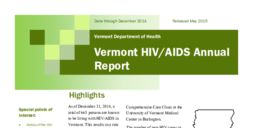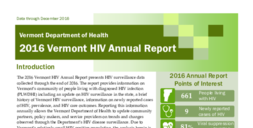
HIV surveillance is the process of collecting, analyzing, and interpreting data on individuals infected with HIV (human immunodeficiency virus), the virus that can cause AIDS. We use data presented in the most recent Integrated Epidemiological Profile for HIV/AIDS (updated every five years) to guide Vermont's HIV/AIDS prevention and care/support service efforts. The comprehensive and multi-perspective profile information is also used to evaluate programs and policies, and is an essential planning tool for HIV prevention and care in our state. Read the most recent Integrated Epidemiological Profile for Prevention and Care Planning in Vermont 2016.




